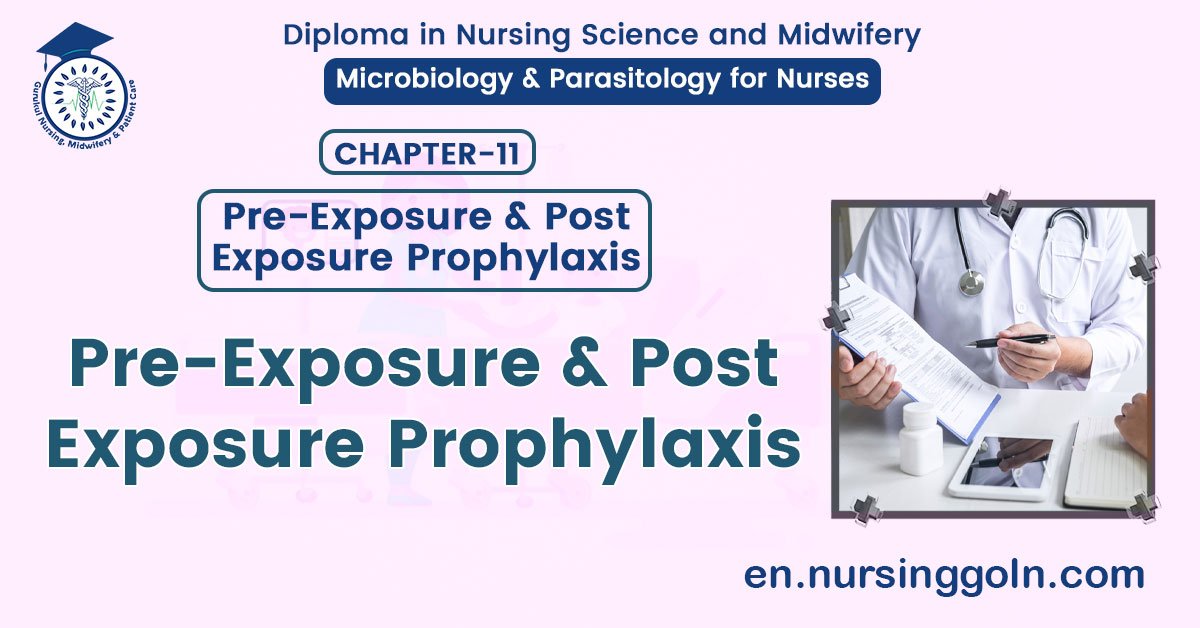Pre Exposure and Post Exposure Prophylaxis – Basic microbiology, parasitology, and immunology; nature, reproduction, growth, and transmission of common microorganisms and parasites in Bangladesh; prevention including universal precaution and immunization, control, sterilization, and disinfection; and specimen collections and examination. Students will have an understanding of common organisms and parasites caused human diseases and acquire knowledge about the prevention and control of those organisms.
Pre Exposure and Post Exposure Prophylaxis
Definition of Pre-Exposure Prophylaxis
Pre-exposure prophylaxis (PrEP) is the use of drugs to prevent disease in people who have not yet been exposed to the disease-causing agent.
Definition of Post Exposure Prophylaxis
Post-exposure prophylaxis, also known as post-exposure prevention (PEP), is any preventive medical treatment started after exposure to a pathogen (such as a disease-causing virus), in order to prevent the infection from occurring.

Pre-Exposure & Post Exposure Prophylaxis of Tetanus
| Pre-exposure prophylaxis: | Tetanus is prevented by immunization with tetanus toxoid (TT) in childhood and every 10 years thereafter.
|
| Post-exposure prophylaxis: |
|

Pre-Exposure & Post Exposure Prophylaxis of Rabies
| Pre-exposure prophylaxis | By active immunization. Types of vaccine:
Pre-exposure immunization with rabies vaccine should be given to individuals in high-risk groups, such as veterinarians, zookeepers, and travelers to areas of hyper endemic infection |
| Post-exposure prophylaxis | A. Passive: Human rabies immunoglobulm. Types of Rabies antibody.
B. Active: Human diploid cell vaccine;
Inactivated sheep brain vaccine;
|

Pre-Exposure & Post Exposure Prophylaxis of Hepatitis B Virus Infection
| Pre-exposure prophylaxis: | 1. Immunization
2. Transfusion of safe blood. 3. Use sterile syringe & needle. 4. Avoid multiple sexual partners. |
| Post-exposure prophylaxis: | 1. Passive immunization: By Hepatitis B immunoglobulin (HBIG). Immediate administration of HBIG is recommended as the initial step in preventing infection of individuals –
2. Active immunization: By vaccine prepared from HBsAg. |

Pre-Exposure & Post Exposure Prophylaxis of HIV Infection
| Pre-exposure prophylaxis | 1. Prevention of sexual transmission: education to public; particularly to the high-risk groups. Dangers or sexual promiscuity and drug abuse should be high – lighted. 2. Prevention of blood borne transmission:
3. Control & treatment of STDs. |
| Post-exposure prophylaxi | Anti-retroviral therapy: a. Nucleoside Reverse Transriptase Inhibitors (NRTIs):
b. Non-Nucleoside Reverse Transcripase Inhibitors sinun (NNRTIs):
c. Protease inhibitors:
d. Fusion inhibitor:
Drugs combinations: a. Two from NRTIs + one from NNRTIS. |
Read More….
